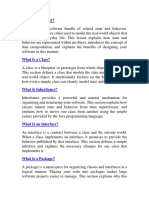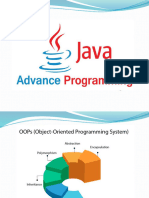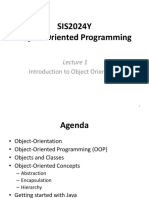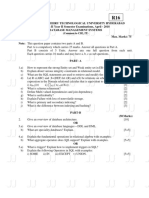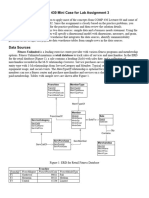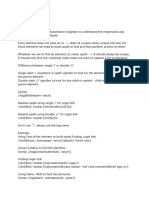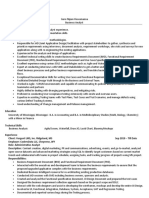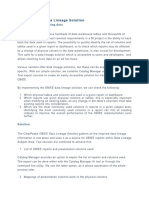Java Programming
Topperworld.in
OOp’s cOncept in java
• Object-oriented programming System(OOPs) is a programming concept
that is based on “objects”.
• It allows users to create objects they want and create methods to handle
those objects.
• The basic concept of OOPs is to create objects, re-use them throughout
the program, and manipulate these objects to get results.
• The main principles of object-oriented programming are abstraction,
encapsulation, inheritance, and polymorphism. These concepts aim to
implement real-world entities in programs.
OOPs (Object-Oriented Programming System)
It simplifies software development and maintenance by providing some
concepts:
Object
Class
Inheritance
Polymorphism
Abstraction
Encapsulation
©Topperworld
�Java Programming
❖ Object
• Any entity that has state and behavior is known as an object.
• For example, a chair, pen, table, keyboard, bike, etc. It can be physical
or logical.
• An Object can be defined as an instance of a class.
• An object contains an address and takes up some space in memory.
• Objects can communicate without knowing the details of each other's
data or code.
• The only necessary thing is the type of message accepted and the type
of response returned by the objects.
Example: A dog is an object because it has states like color, name, breed, etc.
as well as behaviors like wagging the tail, barking, eating, etc.
❖ Class
• Collection of objects is called class. It is a logical entity.
• A class can also be defined as a blueprint from which you can create an
individual object. Class doesn't consume any space.
©Topperworld
�Java Programming
❖ Inheritance
• When one object acquires all the properties and behaviors of a parent
object, it is known as inheritance.
• It provides code reusability.
• It is used to achieve runtime polymorphism.
❖ Polymorphism
• If one task is performed in different ways, it is known as polymorphism.
For example: to convince the customer differently, to draw something,
for example, shape, triangle, rectangle, etc.
• In Java, we use method overloading and method overriding to achieve
polymorphism.
• Another example can be to speak something; for example, a cat speaks
meow, dog barks woof, etc.
©Topperworld
�Java Programming
❖ Abstraction
• Hiding internal details and showing functionality is known as
abstraction. For example phone call, we don't know the internal
processing.
• In Java, we use abstract class and interface to achieve abstraction.
❖ Encapsulation
• Binding (or wrapping) code and data together into a single unit are
known as encapsulation. For example, a capsule, it is wrapped with
different medicines.
• A java class is the example of encapsulation. Java bean is the fully
encapsulated class because all the data members are private here.
❖ Coupling
• Coupling refers to the knowledge or information or dependency of
another class.
• It arises when classes are aware of each other.
• If a class has the details information of another class, there is strong
coupling. In Java, we use private, protected, and public modifiers to
display the visibility level of a class, method, and field.
• You can use interfaces for the weaker coupling because there is no
concrete implementation.
©Topperworld
�Java Programming
❖ Cohesion
• Cohesion refers to the level of a component which performs a single
well-defined task.
• A single well-defined task is done by a highly cohesive method.
• The weakly cohesive method will split the task into separate parts.
• The java.io package is a highly cohesive package because it has I/O
related classes and interface.
• However, the java.util package is a weakly cohesive package because it
has unrelated classes and interfaces.
❖ Association
Association represents the relationship between the objects. Here, one
object can be associated with one object or many objects. There can be
four types of association between the objects:
• One to One
• One to Many
• Many to One, and
• Many to Many
❖ Aggregation
• Aggregation is a way to achieve Association.
• Aggregation represents the relationship where one object contains
other objects as a part of its state.
• It represents the weak relationship between objects.
• It is also termed as a has-a relationship in Java.
• Like, inheritance represents the is-a relationship. It is another way to
reuse objects.
©Topperworld





